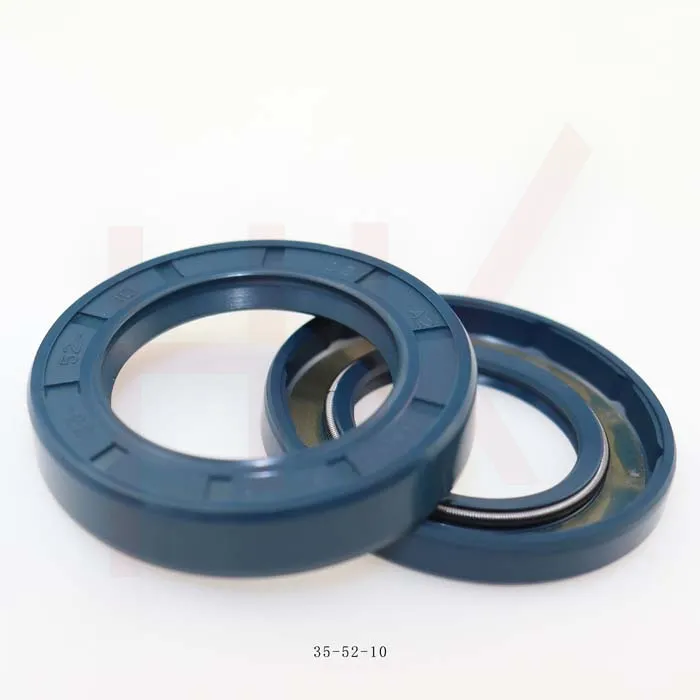Nov . 11, 2024 09:54 Back to list
50x65x8 oil seal
Understanding the 50x65x8 Oil Seal A Key Component in Mechanical Systems
In the realm of mechanical engineering and maintenance, one component that often stands out is the oil seal. Specifically, the 50x65x8 oil seal plays a vital role in ensuring the efficient operation of various machinery and automotive applications. This article delves into the fundamental aspects of oil seals, focusing on the dimensions of 50x65x8, their functions, types, and the importance of proper selection and maintenance.
What is an Oil Seal?
An oil seal, also known as a radial seal, is a device used to prevent the passage of fluids (like oil) and contaminants between rotating and stationary parts in machinery. These seals are critical in preventing fluid leakage, thereby maintaining optimal lubrication levels and enhancing the longevity of machinery. The typical construction of an oil seal consists of a rubber material reinforced with a spring, allowing the seal to create a tight fit around the shaft.
Dimensions Explained 50x65x8
The designation of 50x65x8 indicates the specific dimensions of the oil seal in millimeters
- 50 mm This is the inner diameter of the seal, which means that the seal is designed to fit onto a shaft with a diameter of 50 mm. - 65 mm This is the outer diameter, signifying that the seal will fit into a housing or bore that has a diameter of 65 mm. - 8 mm This measurement represents the thickness of the seal itself.
These precise measurements are crucial for ensuring that the seal fits correctly and functions effectively within the designated assembly. An adequate fit helps prevent oil leakage and protects against dirt and debris, which can cause wear and tear on moving parts.
Functions of the 50x65x8 Oil Seal
The primary functions of the 50x65x8 oil seal include
1. Prevention of Leakage The oil seal creates a barrier that prevents oil from leaking out of the system, which can lead to catastrophic failures in mechanical systems.
2. Contamination Protection It also acts as a barrier against contaminants such as dust, dirt, and moisture, which can damage internal components if allowed to enter the lubrication system.
50x65x8 oil seal

3. Maintain Pressure Oil seals help in maintaining the pressure inside hydraulic systems, ensuring proper operation and efficiency.
4. Enhance Lifespan By preventing leakage and contamination, oil seals contribute to the overall longevity and reliability of mechanical systems.
Types of Oil Seals
Oil seals come in various types, differentiated by their design and the materials used. Some of the common types include
- Rubber Oil Seals The most common type, typically made of Nitrile or Silicone rubber, suitable for oil and grease applications. - Metal-Cased Oil Seals These provide enhanced structural integrity, making them suitable for high-pressure environments.
- Lip Seals These seals feature a flexible lip that maintains contact with the shaft, providing excellent sealing performance.
Importance of Selection and Maintenance
Selecting the right oil seal, such as the 50x65x8, is pivotal for optimal mechanical performance. Factors to consider include compatibility with the fluid, temperature and pressure conditions, and material properties.
Moreover, regular maintenance and inspection of oil seals can prevent premature failures. Signs of wear, leakage, or contamination should prompt immediate action to replace seals and maintain system integrity. Proper installation is also crucial, as incorrect fitting can lead to malfunctions and reduced effectiveness.
Conclusion
The 50x65x8 oil seal is a quintessential component in many mechanical systems, playing a critical role in fluid containment and equipment protection. Understanding its dimensions, functions, types, and the importance of proper selection and maintenance enables engineers and technicians to ensure the longevity and efficiency of machinery. Whether in automotive applications or industrial machinery, oil seals are indispensable in minimizing downtime and maintaining operational excellence. Investing time in selecting the right seal and ensuring its proper upkeep can lead to significant benefits in performance and reliability, ultimately contributing to success in various engineering applications.
-
Wiper Oil Seal: Our Commitment to Clean Hydraulics
NewsAug.13,2025
-
Hydraulic Oil Seal for Self Discharging Cars
NewsAug.13,2025
-
Hub Oil Seal for Agricultural Tractor Hubs
NewsAug.13,2025
-
Skeleton Oil Seal with NBR Material
NewsAug.13,2025
-
Rotary Lip Seal for High Pressure Applications
NewsAug.13,2025
-
Cylinder Seal Kits Our Legacy of Hydraulic Trust
NewsAug.13,2025
-
Unlocking the Potential of Hydraulic Systems with Essential Sealing Solutions
NewsAug.06,2025
Products categories
















